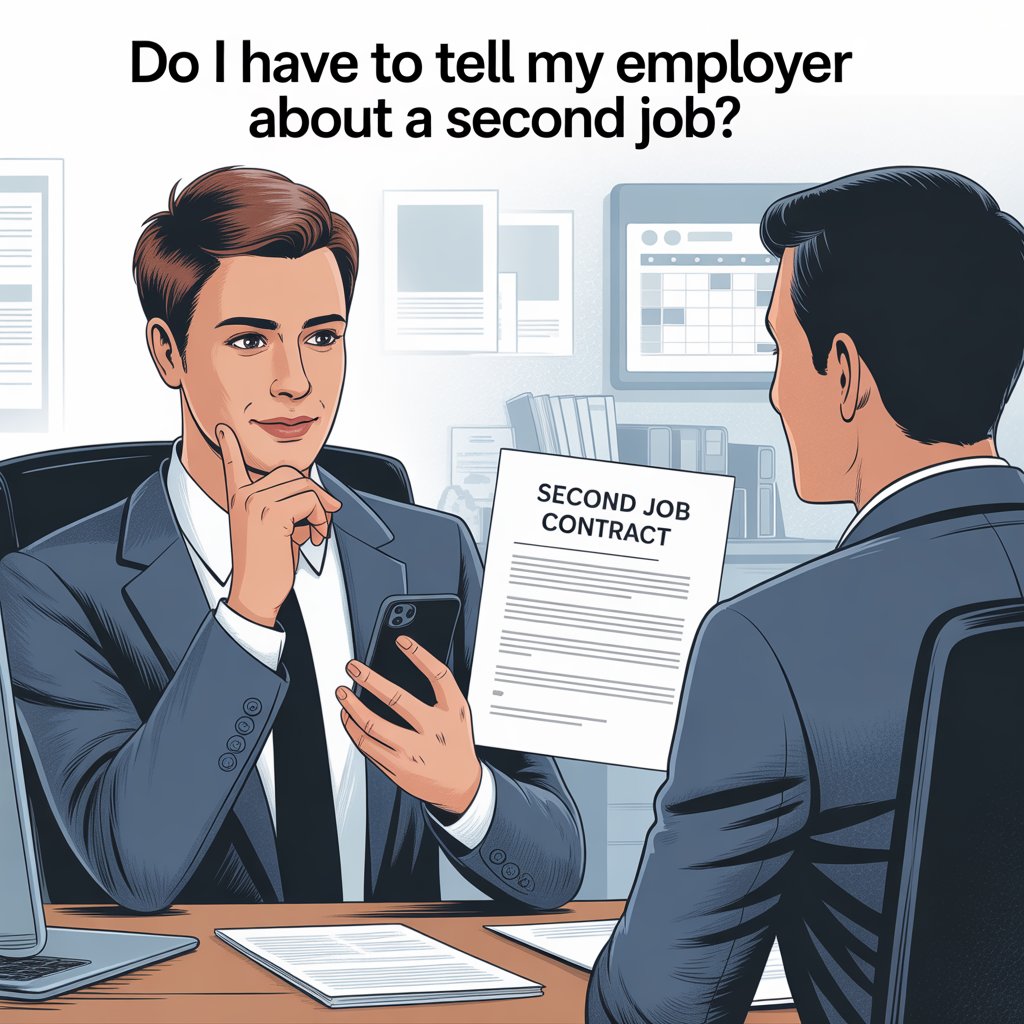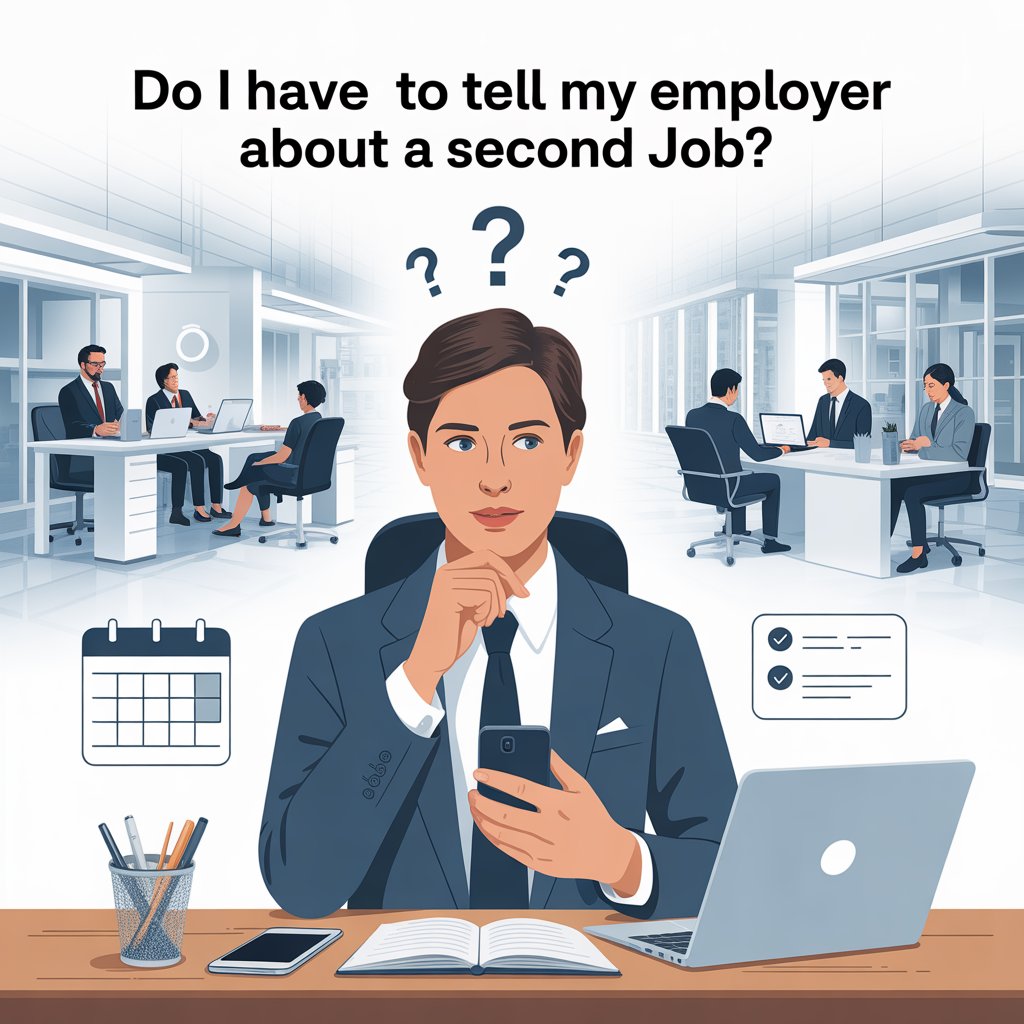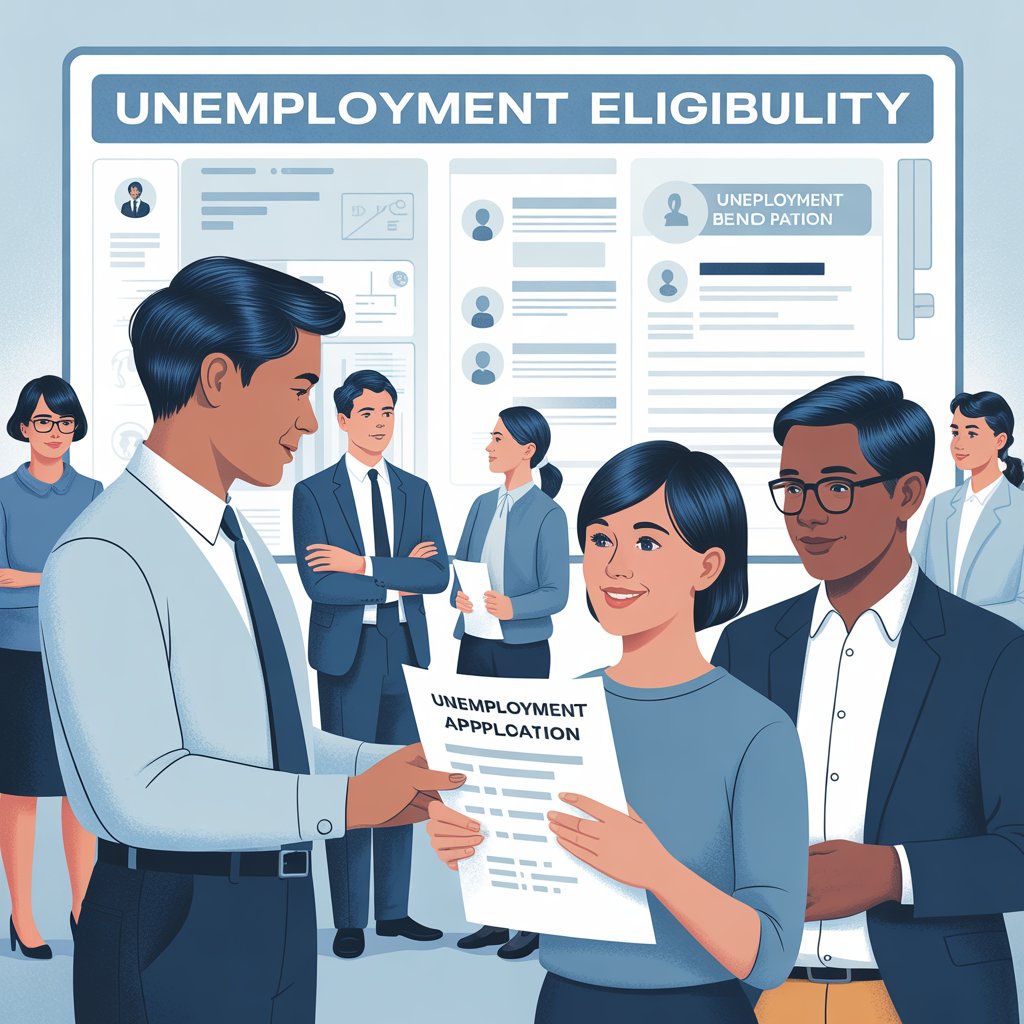Should You Use AI to Write Your Resume? Effective Strategies and Common Pitfalls Explained
Many job seekers wonder if using AI to write their resume will save time and improve their chances of landing an interview.
The truth is that AI can help create a strong, clear resume quickly, but it works best when combined with your own editing to make it personal and accurate. Relying solely on AI may lead to generic content that does not stand out to hiring managers.

AI resume tools are useful for generating summaries and bullet points based on your experience. However, they can sometimes miss the fine details or context that make your skills unique.
Using a platform like RoboApply to build your resume allows you to optimize your content and tailor it for different job applications efficiently.
This article will show how to use AI effectively in your resume process. It includes practical, copy-ready examples and guidance on combining AI features with human input.
Readers will learn how to create professional resumes and cover letters that pass applicant tracking systems and appeal to real employers.
The Rise of AI in Resume Writing
AI technology is changing how job seekers create resumes. It speeds up writing, helps match job descriptions, and checks for errors.
Yet, there are differences between AI-generated resumes and those written by hand. Various popular tools make AI resume writing accessible to many.
How AI Tools Are Used for Career Documents
AI tools use machine learning to scan job ads and tailor resumes to fit specific roles. They suggest keywords that match the skills employers want.
This helps resumes get noticed by software like applicant tracking systems (ATS). Besides resume writing, AI can help improve cover letters and provide grammar checks.
Some tools analyze resumes for clarity and format, making sure job seekers present their skills effectively. Automation also saves time for busy job seekers.
Instead of starting from scratch, they can input details and get a draft quickly. However, AI-generated content still needs review to avoid mistakes or generic phrases.
AI Writing vs. Traditional Resume Writing
Traditional resumes are crafted by hand, focusing on personal style and deep customization. Writers decide how to highlight experiences and use unique language to stand out.
AI resume writing is faster and data-driven. It often uses templates and keyword optimization based on machine learning models like ChatGPT.
While AI can improve grammar and flow, its suggestions can sound robotic or repetitive. Human writers catch nuances and tailor resumes to specific companies or roles.
They add personal achievements that AI might miss. Combining AI tools with manual edits tends to produce the strongest resumes, especially when paired with platforms that offer resume scoring and job application features.
Popular AI Resume Tools and Platforms
Many AI tools are available, each with unique strengths. ChatGPT can help generate text based on prompts.
Other programs specialize in resume formatting, keyword optimization, and job tracking. Examples include tools that check how well a resume matches a job post or suggest better phrases.
Platforms like RoboApply take AI a step further by not just helping build resumes but also scoring them and auto-applying to jobs across sites like LinkedIn and Indeed.
Job seekers should pick tools that improve specific needs—whether that’s generating content, optimizing for keywords, or speeding up applications.
Using AI tools from trusted platforms can improve efficiency without sacrificing quality. For help, job seekers can build your resume with RoboApply.
Benefits of Using AI for Resume Writing
AI tools help job seekers save time, tailor resumes to specific jobs, and improve their chances of getting noticed by hiring managers.
They use data and automation to make the process smoother and more effective without sacrificing quality.
Speed and Efficiency Improvements
AI speeds up resume writing by automating basic tasks like formatting and organizing information. Instead of starting from scratch, users can input their details and get a clean, well-structured draft in minutes.
This cuts down hours of manual editing. Many AI platforms, including RoboApply, allow job seekers to quickly generate multiple versions of their resumes.
This saves time when applying to different roles that require slightly different skills or keywords. Automation also means fewer errors in formatting or grammar.
AI scans for mistakes and suggests corrections, making the resume look professional without extra effort from the user.
Personalization at Scale
AI can tailor resumes for many job applications in a short time. It analyzes job descriptions and highlights relevant skills, experiences, and keywords that match each role’s requirements.
This personalized focus helps resumes pass applicant tracking systems (ATS). Instead of rewriting resumes manually for every job, candidates use AI to create versions that align with different industries or job titles.
This scalability is especially useful for those applying to many positions at once. Tools like RoboApply also help personalize cover letters alongside resumes.
This increases the chance of catching a recruiter’s attention and shows genuine interest in the specific job.
Analytics and Keyword Optimization
One major benefit of AI is its use of analytics to boost resume effectiveness. AI identifies industry-specific keywords and skills that improve the chances of passing ATS filters.
AI platforms score resumes against job descriptions, showing what’s missing or overused. This feedback helps users optimize their resumes for each application, making sure they meet employer expectations.
Keyword optimization means the resume highlights the right qualifications, so it ranks higher in search results. AI tracks these improvements, offering clear ways to adjust language and content.
RoboApply’s analytics features provide detailed suggestions to improve resumes, guiding users on how to get noticed faster by recruiters and hiring software.
Limitations and Pitfalls of AI-Generated Resumes
AI tools can speed up resume writing but have important limits. They often miss personal nuances, create generic content, and sometimes include errors.
These weaknesses can weaken a job application and reduce chances to stand out.
Lack of Human Touch
AI resumes often miss the personal details that show a candidate’s unique value. Soft skills, like teamwork or communication, are hard to explain well with automated tools.
These skills usually need stories or examples that an AI cannot easily create. Personalization is key in resume writing.
Tailoring resumes to fit specific roles shows thought and effort. AI tends to produce more general resumes that lack this detail, making applications feel less genuine.
This can hurt interview chances, especially for roles where culture fit or personality matters. Using tools like RoboApply can help balance AI efficiency with personal input, allowing users to add human insights while still saving time.
Generic Language and Over-Optimization
AI often fills resumes with repetitive buzzwords or phrases aimed at passing through Applicant Tracking Systems (ATS). This overuse can make resumes sound mechanical and boring.
Generic language also means resumes may look similar to others using the same AI tools. Hiring managers might quickly spot this and skip over them.
Instead, resumes should highlight real achievements with clear, specific language. An AI-generated resume might not know when to cut unnecessary jargon.
Job seekers should carefully edit AI drafts and use services like RoboApply to optimize their resumes without losing authenticity.
Potential for Inaccuracy and Misinformation
AI can sometimes add incorrect information or misinterpret job history. It might exaggerate skills or create unsupported claims unintentionally.
This risks confusing employers or damaging credibility. Job seekers must review AI-generated content closely.
Errors like wrong dates, inaccurate job titles, or misleading descriptions can easily happen. Careful fact-checking before submitting a resume is essential.
Using AI tools alongside manual review, and employing resume scoring features from platforms like RoboApply, can help catch mistakes early and improve accuracy.
What AI Does Well in Resume Creation
AI can handle several important parts of creating a resume with speed and accuracy. It excels at arranging information clearly and choosing the right details to highlight based on the job description.
This helps job seekers present their work experience and skills in a way that matches what employers want.
Formatting and Structuring Content
One of AI’s strongest points is organizing a resume so it looks clean and professional. It uses standard formats that are easy to read for both humans and Applicant Tracking Systems (ATS).
This means section headers like Education, Work Experience, and Skills are placed logically, with consistent spacing and alignment. AI can also create bullet points that are concise and action-oriented, making achievements stand out.
It ensures the resume flows well, avoiding clutter or too much white space. For example, an AI might format dates and job titles uniformly across all entries to improve readability.
This kind of structured setup is helpful for job seekers who might struggle with design or who want to avoid common formatting mistakes.
Tools like RoboApply help users build resumes with these formatting standards automatically, saving time and effort.
Highlighting Relevant Experience
AI can analyze a job description and pick out keywords and phrases that matter most. It then matches those terms to the candidate’s skills, work history, and accomplishments.
This makes the resume more targeted and improves the chances of passing automated screenings. For instance, if a job listing emphasizes “project management” and “team leadership,” AI will suggest including specific examples of these skills in the work experience section.
It can also rephrase achievements to better fit the language recruiters expect. However, AI works best when paired with human review.
It identifies relevant experience but may miss context or unique details that a person can add. Using AI as a helper rather than the sole creator often produces the strongest resume.
Job seekers can use AI-powered platforms to optimize their resumes by focusing on these matching skills and achievements, ensuring they clearly address the job’s requirements.
Where AI Falls Short in Resume Writing

AI can speed up resume creation but struggles with areas that require deep personal insight.
It often misses how to best show unique talents or adjust to different job roles in meaningful ways.
Showcasing Unique Skills and Soft Skills
AI tools find it hard to highlight unique skills because they rely on patterns and templates.
Personal strengths like creativity, leadership, or emotional intelligence are often vague or lost.
These soft skills need examples or stories to seem real, which AI typically cannot create well on its own.
For example, saying “excellent communication skills” is common, but explaining how someone used those skills to improve team results or manage conflict requires personal details.
Adding these makes the resume stand out.
Users should add their own experiences and specifics after the AI draft.
Tools like RoboApply let people customize skill descriptions and suggest ways to include relevant examples to better show what makes them different.
Adapting to Specific Roles
AI often struggles to tailor resumes for very specific jobs.
It can insert keywords but might miss the nuances hiring managers want.
For example, skills needed for a sales position are very different from those in engineering, even if titles seem similar.
Effective resumes change tone, focus on relevant skills, and reorder content based on the job.
AI might not pick the best parts to emphasize or adjust soft skills descriptions properly.
Job seekers should review and modify AI-generated resumes carefully.
They can use RoboApply to optimize your resume for each posting by highlighting the right skills and phrasing that match the job’s unique demands.
The Role of Human Oversight

Human review is essential when using AI to write a resume.
It ensures the final document fits the job and avoids mistakes AI might make.
Job seekers and HR professionals benefit when AI work is carefully edited and customized.
Editing and Personalizing AI-Generated Content
AI can produce a solid first draft, but human input is needed to match the resume to specific job descriptions.
Job seekers should tailor AI-generated resumes by adding unique accomplishments and precise skills.
Editing should focus on tone, clarity, and relevance.
For example, changing vague statements into clear, results-driven bullet points helps recruiters understand a candidate’s impact.
It is also vital to check facts and dates for accuracy since AI can sometimes mix details.
Using tools like RoboApply allows users to optimize your resume by combining AI drafts with personal edits.
Common Mistakes to Watch For
AI resumes often have generic phrases that don’t stand out, which can hurt job seekers in competitive markets.
Repeating common buzzwords without proof or specifics is a typical AI mistake.
Another common issue is mismatched skills or job titles that don’t align with the application.
Human review ensures the resume reflects the candidate’s actual experience and fits the job requirements.
Formatting issues or inconsistent style can also arise.
Humans must ensure the resume looks polished and easy to read.
Using platforms like RoboApply can help users catch errors and improve formatting while still benefiting from AI-generated content.
How Recruiters and Hiring Managers View AI-Generated Resumes

Recruiters and hiring managers have mixed opinions about resumes created by AI tools.
The way these resumes are seen often depends on how well the applicant uses AI and how the hiring process itself integrates technology.
Perceptions in the Hiring Process
Recruiters look closely at resumes for clear, honest, and personalized information.
When they spot a resume that seems too generic or filled with keyword stuffing, often a sign of AI generation, it can raise doubts about the candidate’s true experience or fit.
Some hiring managers feel AI resumes lack the personal branding and storytelling that make a candidate stand out.
Mistakes like fabricated skills or vague job descriptions can occur if AI hallucinates details, and that harms trust.
Many recruiters recommend using AI only as a starting point and then editing the resume heavily to add a personal touch.
Key points recruiters focus on:
- Specific achievements
- Clear language
- Authenticity
AI Recruitment vs. Traditional Hiring
AI recruitment tools scan resumes quickly to rank candidates based on keywords and matches to job descriptions.
This speeds up the hiring process but can also miss nuance in applicants’ actual skills.
Traditional hiring methods rely more on human judgment and a deeper review of each resume.
Some HR teams use a mix of AI and human review.
AI systems filter out resumes that don’t pass basic criteria, while recruiters assess the shortlisted resumes for fit and personality.
This two-step approach means an AI-generated resume might get overlooked if it doesn’t align with screening software before reaching a person.
To do well, candidates should focus on both: making resumes pass automated scans and appeal to human readers.
Tools like RoboApply help users optimize your resume so it works better with AI recruiters while still feeling personal and strong for hiring managers.
Optimizing AI-Generated Resumes for Applicant Tracking Systems

AI can help craft resumes faster, but those resumes must still pass through applicant tracking systems (ATS) to reach recruiters.
To do this, resumes need to match specific system rules, including format, keyword use, and content clarity.
Understanding how ATS software screens resumes and using targeted keywords can boost visibility and increase chances of being seen as a relevant candidate.
Understanding ATS Requirements
Applicant tracking systems scan resumes to filter out unqualified candidates quickly.
Many ATS tools prioritize simple layouts and clear sections to avoid parsing errors.
Complex designs, graphics, or unusual fonts often cause important information to be missed.
Key resume traits for ATS include:
- Standard headings like “Work Experience” or “Education.”
- Avoiding headers or footers where information might be hidden.
- Using common fonts such as Arial, Calibri, or Times New Roman.
- Saving the file as a .docx or PDF (if the ATS accepts it).
Skills and role titles should be clearly labeled because ATS software looks for these to match job descriptions.
Resumes must focus on a skills-based approach to highlight relevant abilities clearly to the system.
Keyword Integration Strategies
Keywords are the exact terms ATS algorithms search for to find suitable candidates.
Incorporating keywords from the job description into your resume matters more than general skills or jargon.
Tips to manage keywords:
- Use exact phrases from the job posting instead of synonyms.
- Place keywords naturally in bullet points under skills, experience, and summary sections.
- Avoid keyword stuffing; instead, emphasize critical terms like industry-specific skills and tool names.
- Use a mix of hard skills (e.g., “data analysis,” “project management”) and soft skills if noted in the job description.
A balanced keyword use helps ensure the resume appears in recruiter searches without sounding robotic.
Tools like RoboApply can help job seekers optimize their resumes and tailor content dynamically for each job, improving ATS compatibility and increasing interview chances.
When to Use AI vs. Human Resume Writing

Deciding between AI and human resume writing depends on the complexity of the job market and the type of position sought.
Job seekers must consider how their resume needs to stand out to HR professionals in competitive fields.
Choosing the Right Approach for Different Job Markets
In fast-moving or entry-level job markets, AI resume tools can quickly generate resumes formatted to meet applicant tracking system (ATS) requirements.
This saves time and ensures keywords match job descriptions.
AI is helpful for roles with clear, standardized skills such as retail, customer service, or administrative jobs.
For specialized or senior roles, human resume writers usually add more value.
They incorporate creativity, tailor language for specific industries, and highlight unique achievements that AI may miss.
HR professionals often favor resumes that tell a story and show personality in such markets.
Job seekers should evaluate their industry’s demands before choosing AI or human expertise.
Hybrid Strategies for Best Results
Combining AI and human input often produces the strongest resumes. Job seekers can use AI tools to build a solid draft quickly, ensuring relevant keywords and formatting align with ATS standards.
Then, a human editor can improve clarity, tone, and personalization. This hybrid method works well in most markets by balancing speed with quality.
It helps tailor resumes for nuances in job descriptions that AI might not fully capture. HR professionals appreciate resumes that offer both precision and authenticity.
Using platforms like RoboApply allows users to build your resume with RoboApply. They can then review and tweak it personally or with professional help.
This streamlines the job search while enhancing resume appeal.
Here’s what a hybrid resume process might look like:
- Step 1: Generate a draft using AI tools focusing on ATS keyword optimization
- Step 2: Edit for style, achievements, and job-specific tailoring by a human
- Step 3: Use RoboApply to score and adjust the resume before applying
- Step 4: Auto-apply to jobs across platforms using RoboApply for efficiency
Future Trends in AI and Resume Writing

AI in hiring and resume writing is growing more advanced. New tools will better analyze applicant data, while human resources (HR) will adapt to use AI insights alongside personal judgment.
These changes will affect how job seekers create resumes and how employers review them.
AI-Driven Hiring Tool Advancements
AI hiring tools are improving in understanding resumes beyond keywords. They will soon scan for skills, achievements, and experience patterns that fit the job description more accurately.
This means resumes will need clear, organized detail to match these AI evaluations. These tools will also predict candidate success based on data from past hires.
They can assess cultural fit and learning potential by analyzing social and professional history. Candidates who use platforms like RoboApply can optimize their resume to align with this advanced AI, making their profiles stronger.
AI will integrate with multiple job platforms, enabling smoother matching and applications across sites like LinkedIn and Indeed. This reduces manual effort and increases chances of matching with ideal roles faster.
Evolving Role of Human Resources
Human resources will increasingly rely on AI but still play a critical role in hiring decisions. AI will handle initial screening and sorting, but HR professionals will interpret results and assess soft skills or unique qualifications that machines can miss.
HR teams will also focus more on education and ongoing training to understand AI tools’ results and ethical use. This shift means candidates should present resumes clearly and authentically, knowing humans will review final decisions.
For job seekers, combining machine-friendly resumes with strong personal stories can be key. Using services that help create a professional cover letter and improve resume scores, like RoboApply, ensures readiness for this blended review process.
Frequently Asked Questions
Using AI to write a resume can change how job seekers present their skills and experience. It saves time and can sharpen wording but also carries risks like detection by employers or ethical concerns.
The right features and thoughtful use can improve job chances.
What advantages do AI resume builders offer over traditional resume creation methods?
AI resume builders quickly generate clear, well-structured resumes. They suggest optimized phrases that match job descriptions, helping resumes pass applicant tracking systems (ATS).
This speeds up the process compared to writing from scratch. Tools like RoboApply let users build their resume with AI help and then tailor it for multiple job boards automatically, which traditional methods often lack.
How do employers detect if a resume was written by AI, and does it impact hiring decisions?
Employers may notice patterns such as overly generic language or inconsistent tone. Some use software that flags AI-generated writing.
If a resume feels impersonal or recycled, it can reduce an applicant’s chances. However, careful editing after AI drafting reduces these risks.
Using AI as a starting tool and then customizing improves authenticity and hiring prospects.
Could the use of AI in crafting resumes render human resume writers obsolete?
AI can handle routine formatting and basic writing, but human writers offer personalized insight, storytelling, and industry-specific nuance. Many still value expert writers for creating compelling resumes.
Job seekers on budgets may rely on AI tools like RoboApply, but expert writers remain key for higher-level positions or complex career stories.
Are there any legal or ethical implications in using AI to compose your resume?
Legally, job seekers must be truthful. AI-generated resumes must accurately reflect a candidate’s skills and experience.
Exaggeration or false claims remain the applicant’s responsibility. Ethically, users should disclose if asked about AI use, and avoid plagiarism.
Transparency supports trust with employers.
What features should you look for in the best AI resume builder platforms?
Look for platforms that offer:
- Customizable templates
- ATS optimization suggestions
- Guidance on keyword use
- Easy editing tools
- Integration with job boards for fast application
RoboApply provides these features, helping users optimize their resume and auto-apply to jobs across platforms.
How might incorporating LinkedIn recommendations into an AI-generated resume improve your job prospects?
Including real LinkedIn recommendations adds credibility to skills listed in a resume.
They provide social proof and concrete examples of past performance.
AI tools can help phrase these recommendations effectively.
Adding this element makes resumes stronger and more trustworthy to hiring managers.






